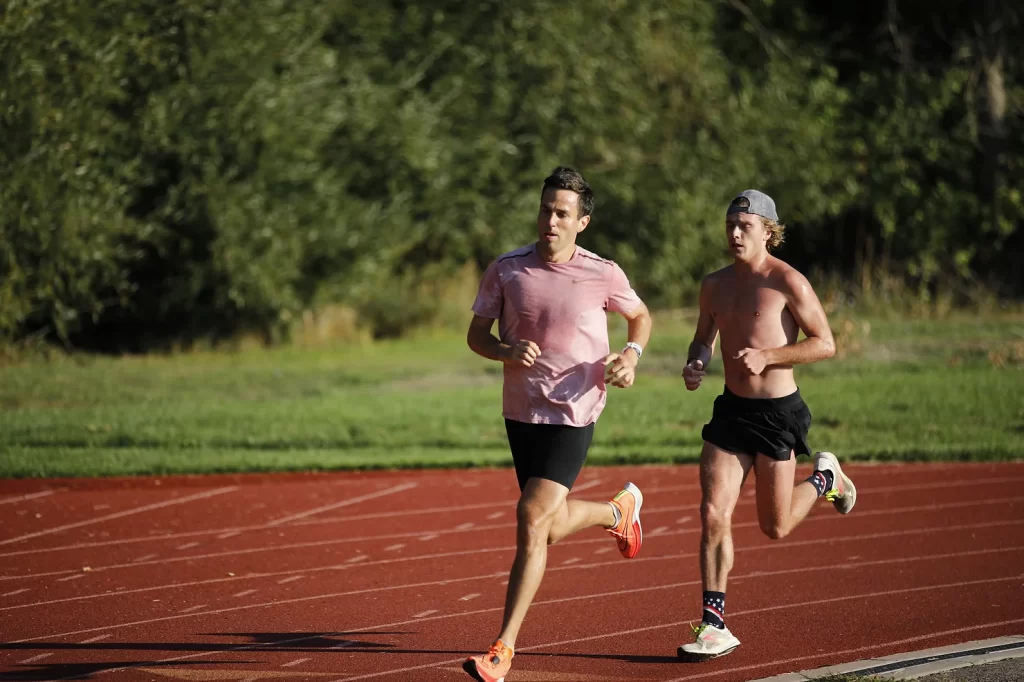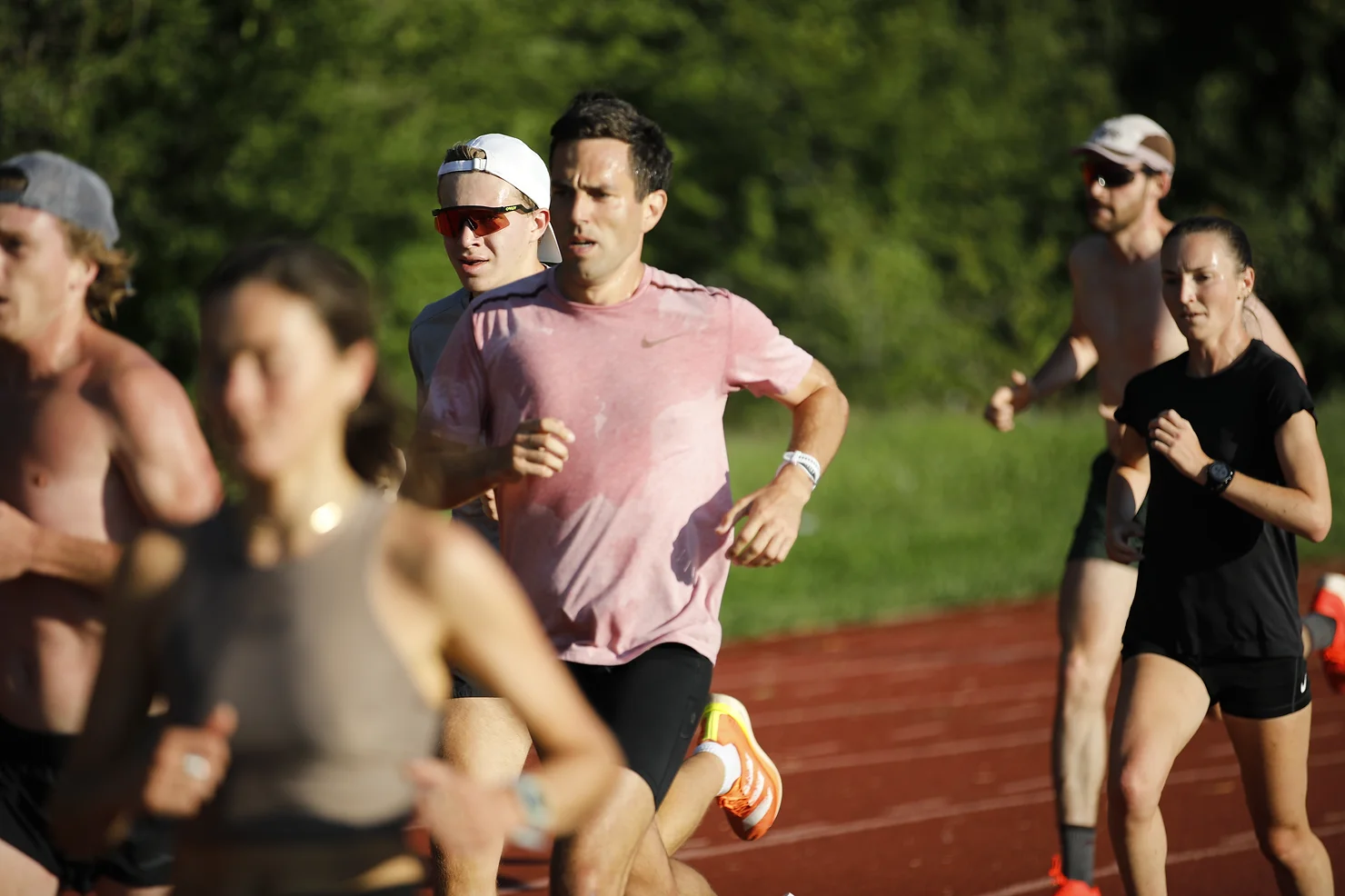Mastering Workout Paces, Rests, and Recoveries: Expert Insights to Elevate Your Training
Coach Nick and I recently recorded an episode on the Mind Your Miles Podcast where we tackled a topic that every runner should understand: the importance of workout paces and how to handle recovery between those hard efforts. I wanted to dive deeper into it here and give you all the details on how to master Rep (R), Interval (I), Threshold (T), and Marathon (MP) paces—what they are, why they matter, and how to execute them correctly. Plus, I’ll go over the common mistakes runners make that could be holding you back. Check out the Mind Your Miles Podcast if you want the full conversation.
Why These Paces Matter
Each pace has a specific purpose in your training, and understanding them is key to optimizing your workouts. A lot of the science behind these paces comes from the pioneering work of running coach Jack Daniels, whose research revolutionized how we think about running workouts. Jack’s research helped a lot of runners realize the importance of threshold training.
Coaches like Nick and I have used his research as a foundation to experiment with creating workouts that help runners actually get faster.
Let’s break down each pace, including their effort levels, to explain why they matter and how to execute them correctly.

Rep Pace (R): The Short, Sharp Stuff
Also Known As: Repetition Pace, Speed Work
Effort Level: 9/10 – All-out effort for a short time
Rep pace involves short, intense efforts, typically 200 to 400 meters long or 30 seconds to a minute. These are done at your mile race pace or faster. As I mentioned in the podcast:
“Think of Rep pace as sprint work for distance runners. These efforts develop speed, power, and running economy.”
Jack Daniels describes Rep pace as efforts that are “fast but controlled,” aimed at improving your speed, running economy, and leg turnover, while avoiding fatigue from longer intervals.
Work-to-Rest Ratio: We will usually prescribe rest that is twice as long as the duration of the effort. For example, if you run a 45-second rep, you’ll typically get about 90 seconds of recovery, sometimes more. “We want you to have nearly full recovery,” as I discussed. “If we cut that rest super short, you’re going to lose that top-end speed focus, and it’s going to turn into more of a VO2 max or aerobic workout. That’s not what we’re after.”
Why This Matters: Rep pace trains your body to fire fast-twitch muscle fibers, improving your form and neuromuscular coordination. As Nick puts it, “It’s like putting your stride in the weight room.” Focus on quality, not just quantity—use the prescribed rest to hit your target speed with each rep.
Interval Pace (I): Where It Starts to Burn
Also Known As: VO2 Max Pace, High-Intensity Intervals
Effort Level: 8/10 – Hard, but sustainable for a few minutes
Interval pace, or “I” pace, is run at your 3K to 5K race pace. This is where things start to burn. As Nick put it, “Interval pace is the perfect blend of threshold and neuromuscular work, but it’s also the pace most runners love to avoid because it hurts. A lot.”
Jack Daniels explains Interval pace as “VO2 max workouts,” designed to improve the maximum amount of oxygen your body can use during intense exercise, which directly translates to better performance in races from the mile to the 5K.
Work-to-Rest Ratio: We generally recommend a 1:1 work-to-rest ratio. For example, if you run a 2-minute interval, you’ll usually have a 2-minute recovery. “We want your heart rate to spike up to VO2 max, dip just slightly, and then get back up there again,” I explained. “Recoveries should be an easy jog—not a full stop. Keep moving to maintain blood flow and prevent your heart rate from dropping too low.”
Why This Matters: Interval workouts train your body to use oxygen more efficiently, which is critical for sustaining harder efforts over longer periods. As I said on the podcast, “It’s like raising the ceiling on your potential. By spending time in this uncomfortable zone, you’re increasing the amount of time you can spend at high intensities without blowing up.” If you’re struggling to hit the paces, Nick suggests, “Dial it back, focus on the effort, and remember that hitting the right intensity is more important than the exact number on your watch.”
Threshold Pace (T): The Sweet Spot
Also Known As: Lactate Threshold Pace, Tempo Pace, Aerobic Threshold Pace, Critical Velocity
Effort Level: 6-7/10 – “Comfortably hard” – you can maintain this pace for about an hour
Threshold pace is often referred to as “the sweet spot” of distance training. It’s run at the fastest pace you can sustain for about an hour—usually somewhere between your 10K and half-marathon race pace. As I put it in our discussion:
“Threshold work is about building stamina and efficiency. It’s that sweet spot where you’re working hard, but not too hard, to build endurance and resist fatigue.”
Jack Daniels describes Threshold pace as the “comfortably hard” effort that improves your endurance by raising the point at which your muscles start to fatigue from lactate build-up. It’s a key component in building a strong aerobic base.
Work-to-Rest Ratio: For Threshold workouts, we might prescribe 60-90 seconds of jogging recovery for shorter reps (like 3-6 minutes) and 2-3 minutes for longer reps (like 1-2 miles). “If you’re doing threshold workouts and you’re stopping your watch, walking, or taking too much time between reps, you’re not spending enough time in the actual threshold zone, which defeats the purpose,” I explained.
Nick added, “If you can’t jog the recoveries, you’re probably running the threshold reps too fast. Slow it down to stay in the right zone. Remember, the goal is to build endurance, not to turn a threshold workout into an interval workout.”
Why This Matters: Threshold workouts help increase your lactate threshold—the pace at which lactate builds up in your blood faster than you can clear it. This is key for longer races like the half-marathon and marathon. “Think of it as raising your cruising speed,” Nick says. “If you can run faster at a lower heart rate, you’ll be more efficient, and your running economy will improve.”
Marathon Pace (MP): Find Your Groove
Also Known As: Marathon Effort, Sub-T, Sub-Tempo, Steady
Effort Level: 5/10 – Moderate effort that feels sustainable over a long duration or similar to the effort level you would use in the middle of a marathon.
Marathon pace is about finding a steady rhythm—a pace you can sustain over a long period. “You’re training your body and mind to handle a steady effort over a long period, just like race day,” Nick explained.
Jack Daniels refers to Marathon pace as “steady-state” running, where the focus is on maintaining a sustainable effort that conditions your body to handle prolonged exertion, enhancing both physical and mental endurance.
Work-to-Rest Ratio: For marathon pace workouts, we usually prescribe shorter or nonexistent recoveries. For example, you might do 2 x 5 miles at marathon pace with a mile of easy jogging in between. “We’re not stopping for coffee breaks here,” Nick joked. “You’re just flowing from one pace to another.”
Why This Matters: Marathon pace workouts help you practice the sustained effort required on race day, building both physical and mental strength. “It’s not just about the legs,” Nick notes. “It’s about building confidence that you can hold that effort for the entire distance.”
Common Mistakes Runners Make in Workouts
When it comes to workouts, we see a lot of runners making the same mistakes over and over. These errors can undermine the effectiveness of your training and prevent you from reaching your potential. Here are some of the most common mistakes we’ve noticed, based on years of coaching and our recent podcast discussion:
Stopping Your Watch or Taking Too Much Rest
This is one of the biggest pitfalls. As I mentioned on the podcast, “If you’re constantly stopping, walking too much, or giving yourself extra breaks, you’re not achieving the adaptations you’re aiming for.” Stopping your watch or taking long breaks can completely change the workout’s effectiveness. You’re not training the way you’re supposed to if you’re constantly pausing.
How to Fix It: Keep your watch running and stick to the prescribed rest intervals. If you need to catch your breath, that’s fine, but keep moving. Even a slow shuffle can help you stay in the right zone.

Getting Greedy Early
Many runners start their workouts too fast because they feel great at the beginning. I explained on the podcast, “Most workouts, the first two or three reps feel kind of easy. Don’t lean into that feeling and rip them.” This can lead to blowing up later in the session.
How to Fix It: Trust the workout plan and stick to the prescribed paces from the start. Remember, the goal is to maintain a consistent effort throughout, not to go out hard and fade.
Focusing Too Much on Hitting Exact Paces
It’s easy to get fixated on hitting specific paces, especially if they’re listed on your training plan. But as we discussed, running is more about effort than exact numbers. I highlighted, “If you’re not hitting the exact paces but still hitting the effort level, you’re still getting the benefit. It’s a skill to learn to adjust on the fly.”
How to Fix It: Focus on your perceived effort rather than just your pace. If the workout feels too hard, adjust the pace down slightly and aim for the right effort zone instead.
Neglecting Active Recovery Between Reps
We often see runners stop completely during rest intervals, thinking they’ll recover faster. But as I discussed, “You clear lactate better with a really light jog than by standing still.” Stopping can actually make it harder to get back up to the desired pace for the next rep.
How to Fix It: Keep moving, even if it’s a slow shuffle or a light jog. This will help clear lactate from your muscles more efficiently and keep your heart rate closer to the target zone.
Altering the Interval Pace Before Adjusting Your Recovery
When a workout feels too easy, many runners think they should push the paces faster. But that’s not always the right move. “If you’re feeling like it’s too easy, jog as much of the rest as you can before you adjust the pace of the intervals,” I mentioned on the podcast. “Start with the rest first, then consider adjusting the fast part of the interval later.”
How to Fix It: If the workout feels too easy, reduce the rest time or jog a bit more actively during the recovery before adjusting the pace itself.
Misjudging When to Cut a Workout Short
Knowing when to cut a workout short is a valuable skill. As Nick pointed out, “Sometimes people miss a pace, and they think it’s a total failure. But it’s not. It’s about making small adjustments rather than stopping altogether.” Understanding when to pull back and when to keep pushing can save you from overtraining or injury.
How to Fix It: If you’re consistently struggling to hit paces or feel your form breaking down, it’s okay to modify the workout or cut it short. Focus on maintaining good form and effort rather than forcing a specific time or distance.
Final Thoughts
Workouts are about more than just running hard—they’re about running smart. By adhering to these principles and focusing on the right effort levels, pacing, and recovery, we’re able to get the most out of the work we put in. As we said, “It’s not just about running hard—it’s about running smart.”
Want more insights? Check out the Mind Your Miles Podcast for a deeper dive into these topics and more. Got questions or topics you’d love us to tackle? Reach out to us anytime. Until next time, I love you, and happy running! (say it back)



